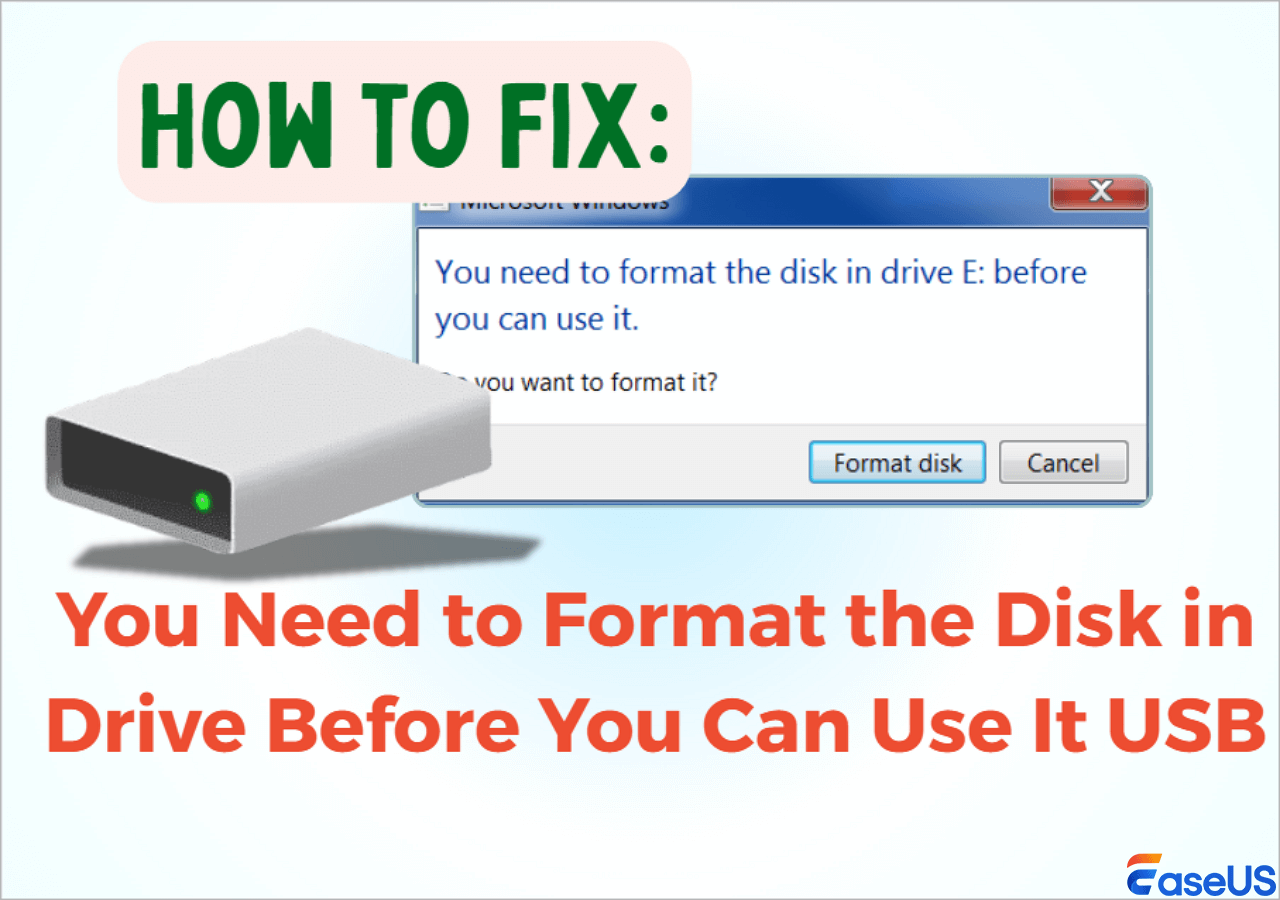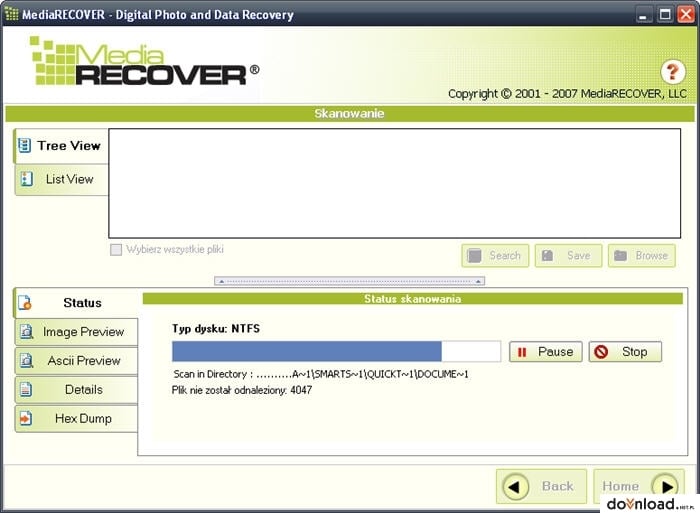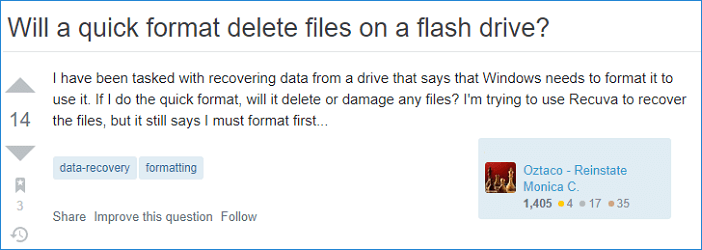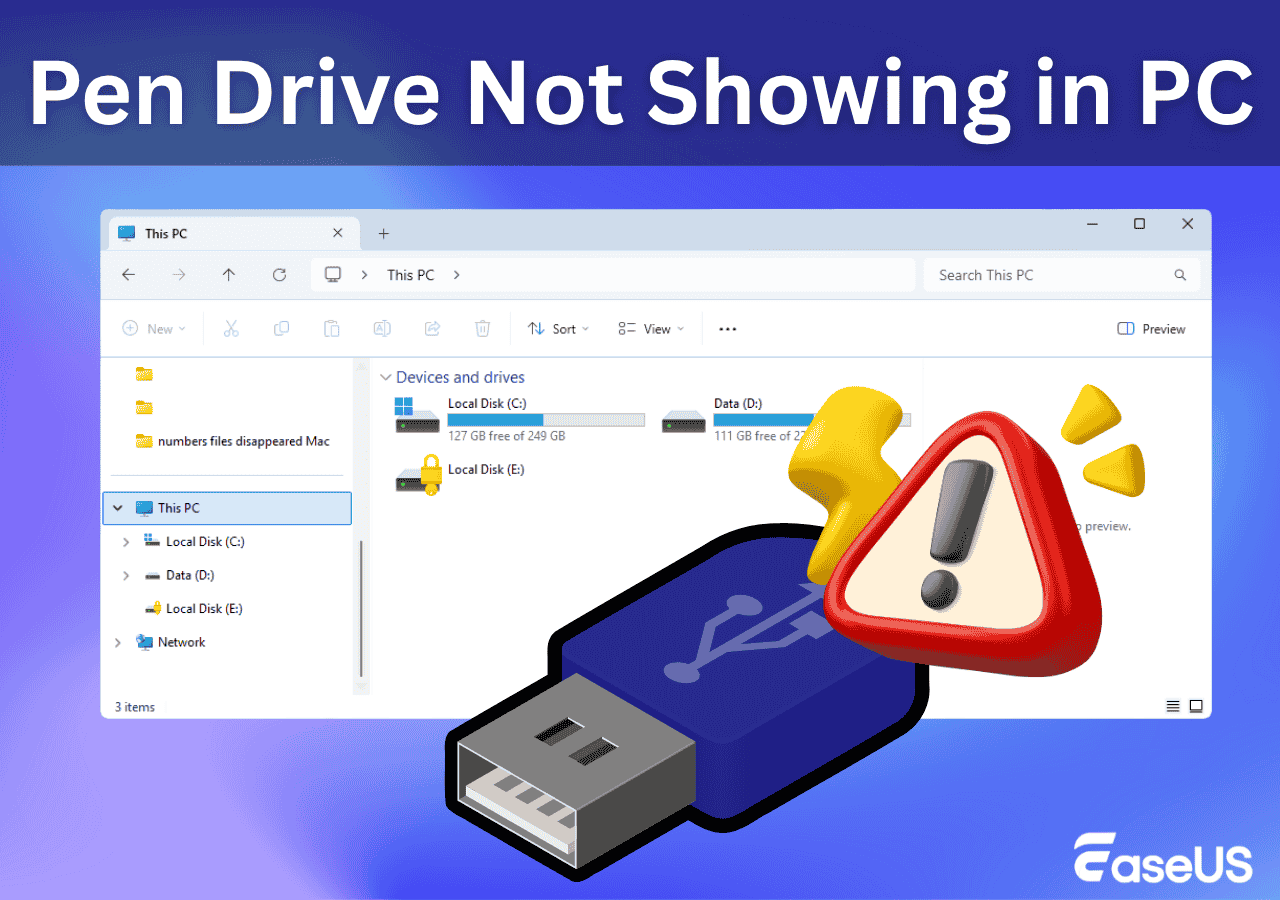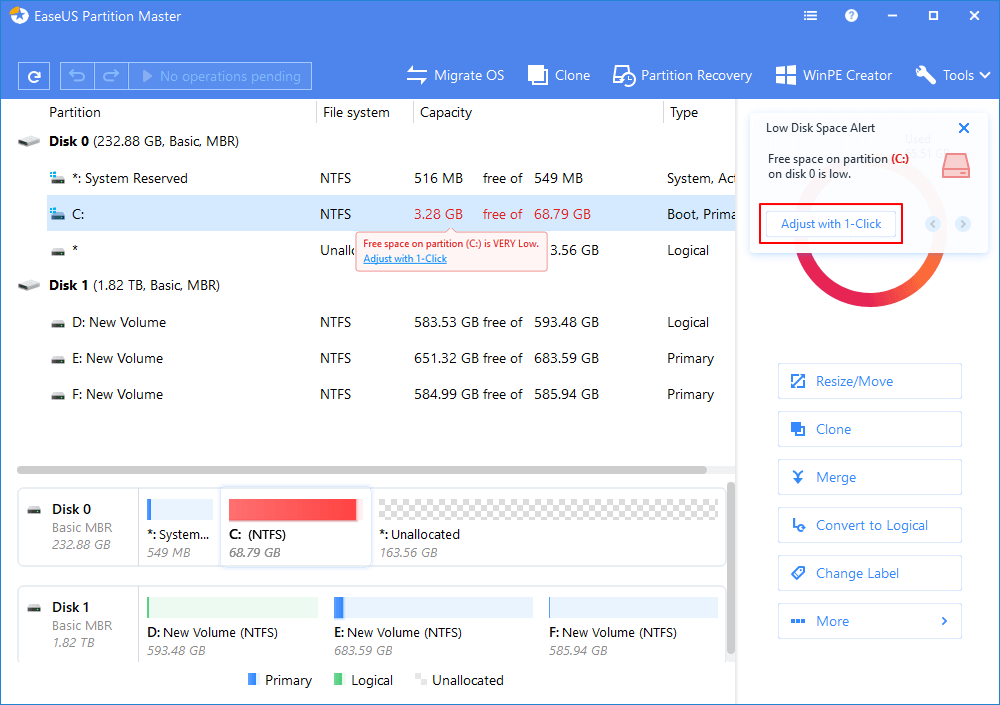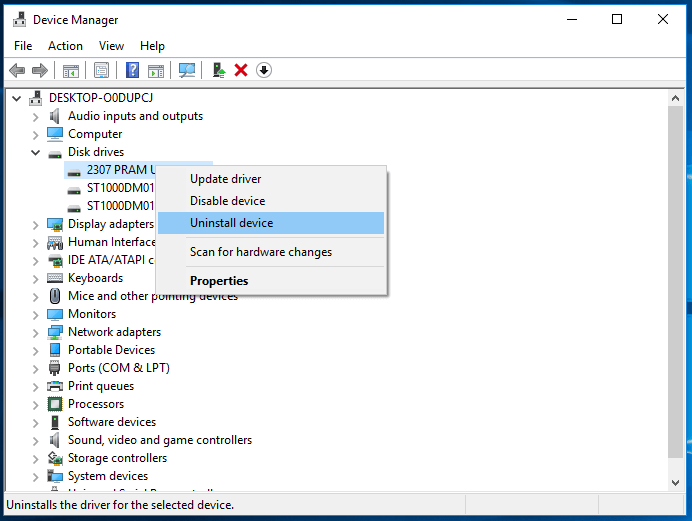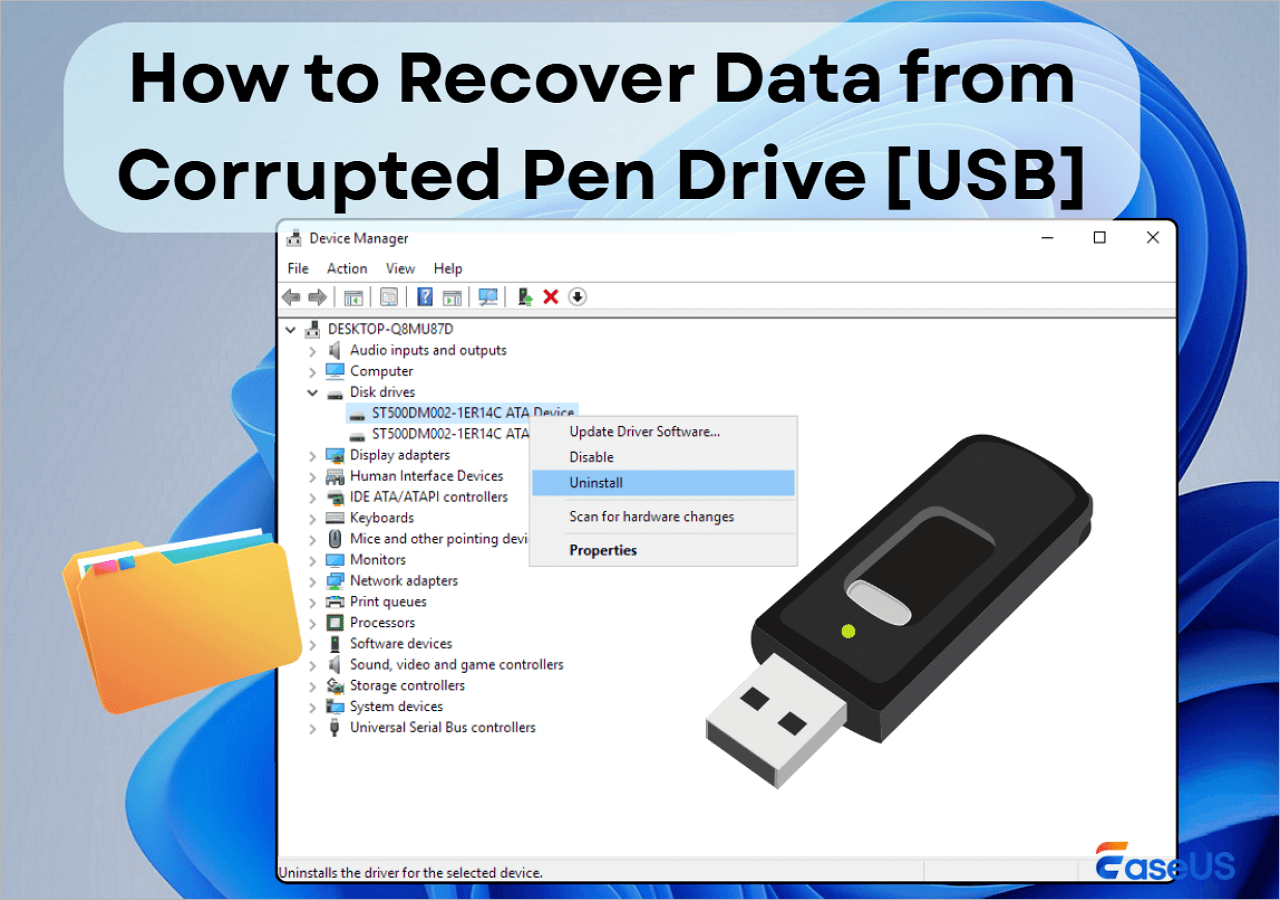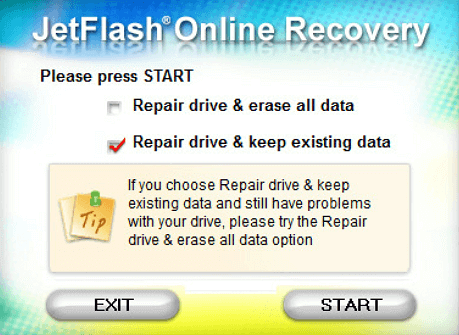-
![]() Fix: Need to Format the Disk in Drive Before You Can Use It USB
Fix: Need to Format the Disk in Drive Before You Can Use It USB December 12,2025
December 12,2025 6 min read
6 min read -
![]()
-
![]() Does Formatting a USB Delete Everything? (What Really Happened)
Does Formatting a USB Delete Everything? (What Really Happened) December 12,2025
December 12,2025 6 min read
6 min read -
![]()
-
![]() RAW USB Recovery | How to Recover Data from RAW USB Drive
RAW USB Recovery | How to Recover Data from RAW USB Drive December 12,2025
December 12,2025 6 min read
6 min read -
![]()
-
![]()
-
![]() Fix USB Drive Not Showing Up in Windows10/11 | 8 Excellent Ways
Fix USB Drive Not Showing Up in Windows10/11 | 8 Excellent Ways December 12,2025
December 12,2025 6 min read
6 min read -
![]() How to Recover Data from Corrupted USB Drive [Pen Drive]
How to Recover Data from Corrupted USB Drive [Pen Drive] December 12,2025
December 12,2025 6 min read
6 min read -
![]()
Page Table of Contents
Don't worry if your USB flash drive or external hard drive not showing up on the computer. It could be the USB port not working that caused your external storage device undetectable or unrecognized.
Here is a complete guide that will help you fully fix USB Port Not Working on Windows 11/10/8/7 problem without losing any data. Follow to make your external storage device showing up again:
| Complete Solutions | Step-by-step Troubleshooting |
|---|---|
| 1. Diagnose If USB Port Not Working | 1. Restart PC and reconnect your device to PC 2. Change the USB cable and try another USB port 3. See if the computer pops USB port error...Full steps |
| 2. Fixes USB Port Not Working Issue | Method 1. Adjust Power Management...Full steps Method 2. Uninstall Universal Bus controllers...Full steps Method 3. Disable USB Selective Suspend...Full steps |
| 3. Restore Data from USB Drives | To recover lost files from USB, Run EaseUS software, scan and recover data...Full steps |
Why Are USB Port Not Working
Case - USB Ports Not Working
"Hi there, do you know how to make a USB, an external hard drive, or an SD card to show up on PC when the USB port is not working? I tried to connect my device to other USB ports on my PC, but still, nothing showed up.
How can I repair a not working USB port and make storage devices detectable on Windows 10? Help please."
When a USB port fails to work or stops working, Windows PCs or laptops won't be able to read or detect these external storage devices. To make the USB port work again in Windows 11/10/8/7, you should check out the causes first.
What Causes USB Ports Malfunctioning
Here is a list of possible causes of USB Port not working issues:
- Power surge on the USB port
- USB port driver is updated
- USB connection cable is broken
- USB port is faulty or broken
Note that the basic way is to restart your computer and change the USB cable. If these don't work, don't worry. Follow the below guide to effectively repair not working USB ports and make external storage devices detectable again without losing any data now.
1. Disagonize If USB Port Is Not Working
First, you must diagnose if it's the not working USB port. Here are the tips:
1. Restart PC and Reconnect Your Devices to PC via the USB Port:
Unplug your storage device > Restart your PC > Reconnect your portable devices to the PC again.
If the device shows up, it could be the loosened connection that caused the issue. If the USB or external drive doesn't show up, move to the next guide.
2. Change USB Cable and Try Another USB Port:
Step 1. Check if the USB connection is loose.
If yes, replug the USB drive to your PC tightly. Then recheck if the device shows up. If not, move to Step 2.
Step 2. Check if the USB cable is broken.
If yes, change a new one and reconnect your external hard drive to your PC. If the device shows up, you can stop here. If it's still not working, continue with Step 3.
Step 3. Change the USB port.
First, change another USB port and see if the device shows up. If yes, it's the faulty USB port.
Next, try another USB port or connect your USB drive to another computer.
- If the device is still unrecognized, the problem exists on the device. Follow USB Drive Not Detected to fix the malfunctioning devices.
- If the USB or external storage device shows up, it's the USB port error.
3. Check If Computer Pops Up Error Message:
Note that, if your computer pops up an error message, telling that "Power surge on the USB port. A USB device has malfunctioned and exceeded the power limits of its hub port. You should disconnect the device...", the problem is with the USB port.
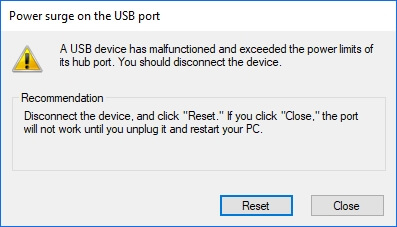
So how to fix the problematic USB port on your computer? Move to the next part, you'll learn how to effectively fix this issue on your own.
2. How to Fix USB Port Not Working in 3 Ways
By following the methods below, you will get the USB port not working issue fixed and repair the USB port to work again:
Method 1. Adjust Power Management
Step 1. Press Windows +R keys, type devmgmt.msc in the Run dialog, and click "OK".
Step 2. Expand Universal Serial Bus controllers, right-click USB Root Hub, select "Properties".
Step 3. Go to the Power Management tab, uncheck "Allow the computer to turn off this device to save power" and click "OK".
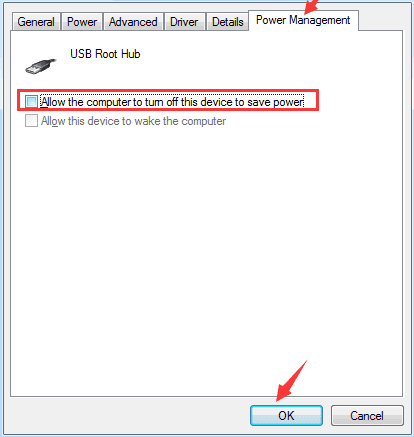
Step 4. Repeat steps 2-3 to just Power Management in each USB Root Hub.
After this, check if your USB ports work again. If not, move to the next method for help.
Method 2. Uninstall & Reinstall Universal BUS Controllers Drivers
Step 1. Right-click on the Windows icon, select "Device Manager".
Step 2. Expand "Universal Serial BUS controllers", find the USB root Hub with a yellow exclamation mark.
Step 3. Right-click on it and select "Uninstall", click "OK".

Step 4. Wait for the process to complete and restart PC.
Step 5. After PC boots up, open the Device Manager window and go to the Action tab.
Step 6. Select "Scan for hardware changes".
Then the USB port will appear. After this, reconnect your portable devices to your PC and there your USB or SD card, etc devices will show up on your PC now.
If it still not working, relax and follow Method 3 to get your issue solved.
Method 3. Disable USB Selective Suspend Feature to Fix "USB Port Not Working" Issue
Step 1. Right-click on the Windows icon and click "Power Options".
Step 2. Click "Additional power settings", click "Change plan settings" next to your current plan option.
Step 3. In the Edit Plan Settings window, click "Change advanced power settings".
Step 4. Find and expand USB settings, expand USB selective suspend settings.
Step 5. Disable both On battery and Plugged-in settings and click "Apply" and "OK" to save the settings.
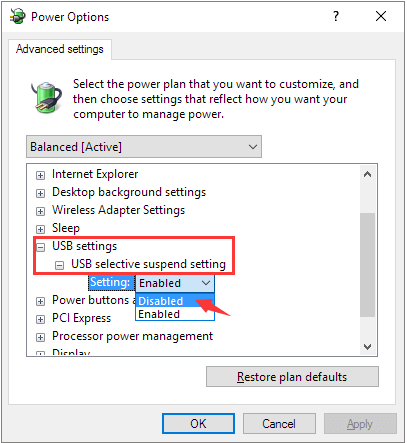
After finishing the process, you should be able to use your USB drive or external hard drive to save or transfer data to your PC again.
3. Restore Data from USB Devices After Fixing Not Working USB Port
After repairing the not working USB port in Windows PC, you can now try to connect your USB or SD card, etc portable storage devices to your PC to transfer data. If the storage devices are still inaccessible and you cannot read any saved data, don't worry.
Powerful EaseUS Data Recovery Wizard - EaseUS Data Recovery Wizard can scan your USB storage devices and find all lost data in only a few simple clicks. This USB data recovery software enables you to:
- Recover deleted files as well as restore formatted or corrupted data from USB drive
- Restore lost files from USB due to accidental deletion, drive corruption/damage, RAW drive, etc.
- Repair corrupted files in USB, support photos, videos, and document repair
Follow these steps below to restore lost data from portable USB or other devices on Windows 11/10/8/7 now:
Step 1. Choose the USB drive to scan
Launch EaseUS Data Recovery Wizard and choose your USB drive where you lost important files. Click "Scan for lost data" to start.
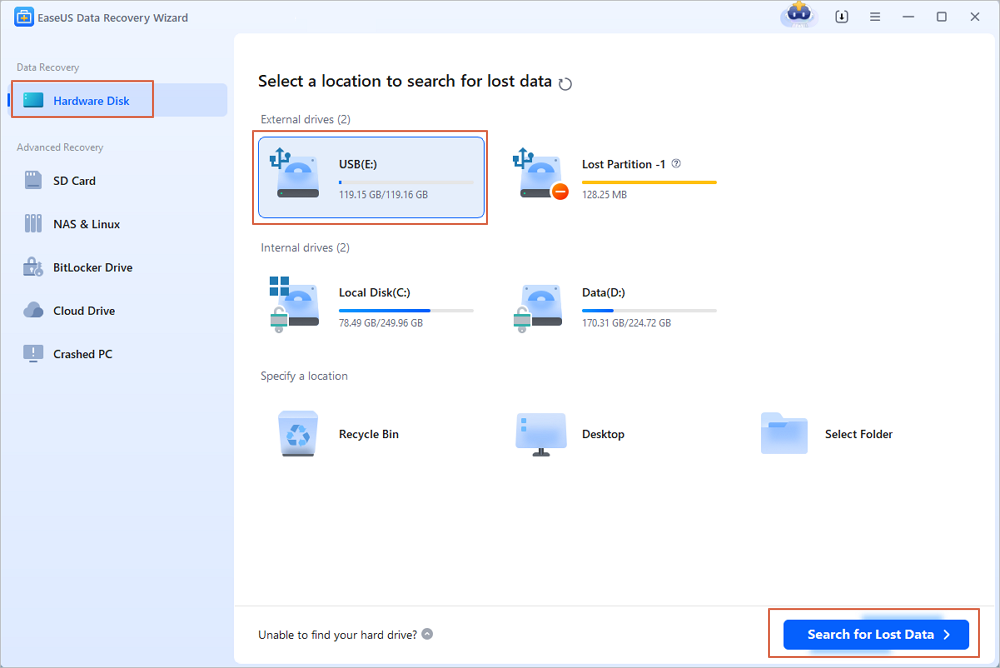
Step 2. Check and preview USB drive data
When the scanning is finished, you can quickly locate a specific type of file by using the Filter feature as well as the Search option.
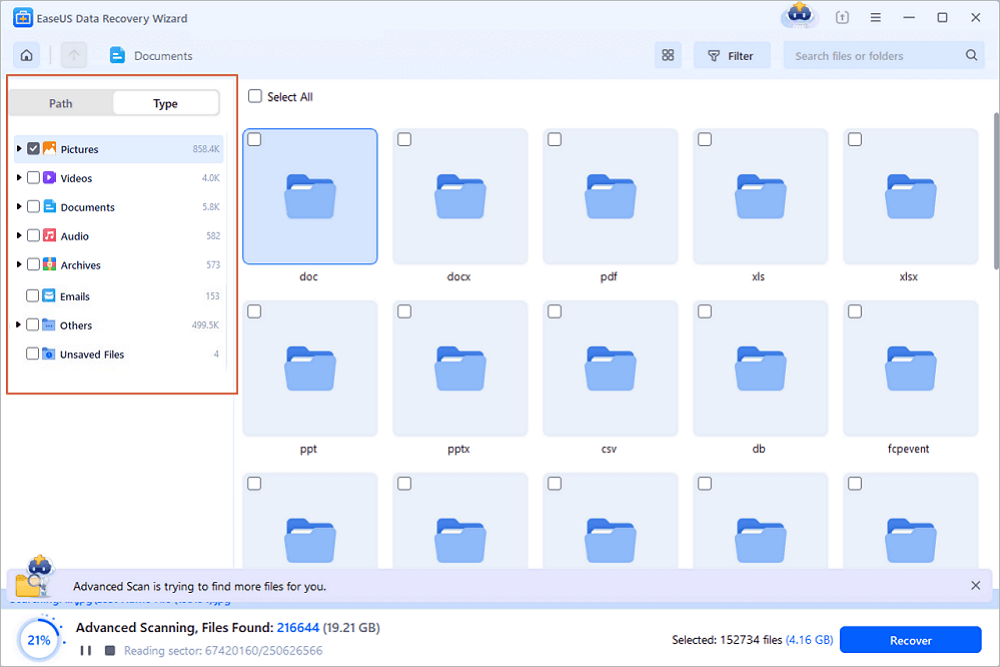
Step 3. Restore flash drive data
After checking and finding lost USB drive files, click "Recover" to restore them. You shall save the found files to a safe location on your PC rather than to your USB drive.
💡Tip: You can restore data on the local disks, external hard drives, and also the cloud storage.
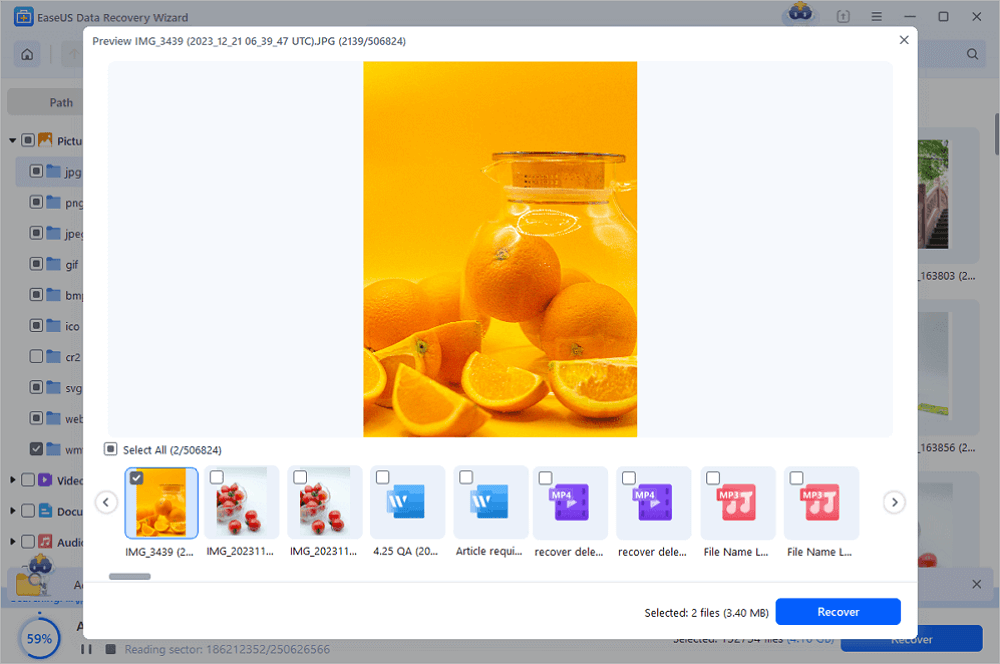
After this, you can reformat the portable storage devices into NTFS or FAT32 so to make them reusable for storing or transferring data again.
Stay Calm When USB Port Is Not Working, You Can Fix It Here
On this page, we explained why is the USB port not working on your computer. And we offered a complete guide to help you diagnose if the problem exists on the USB port.
If it's the USB port not working, don't worry. You can follow Method 2 to update the USB Root Hub driver to make it show up and work again.
After fixing the issue, your computer will be able to detect and use your external storage devices again. If you lost files during the process, let EaseUS Data Recovery Wizard help.
Stay calm if your USB port is not working. Take action and follow this guide to fix it right now.
Was this page helpful?
-
Finley is interested in reading and writing articles about technical knowledge. Her articles mainly focus on file repair and data recovery.…
-
Tracy became a member of the EaseUS content team in 2013. Being a technical writer for over 10 years, she is enthusiastic about sharing tips to assist readers in resolving complex issues in disk management, file transfer, PC & Mac performance optimization, etc., like an expert.…

20+
Years of experience

160+
Countries and regions

72 Million+
Downloads

4.9 +
Trustpilot Score


Free Data
Recovery Software
Recover data up to 2GB for free!
